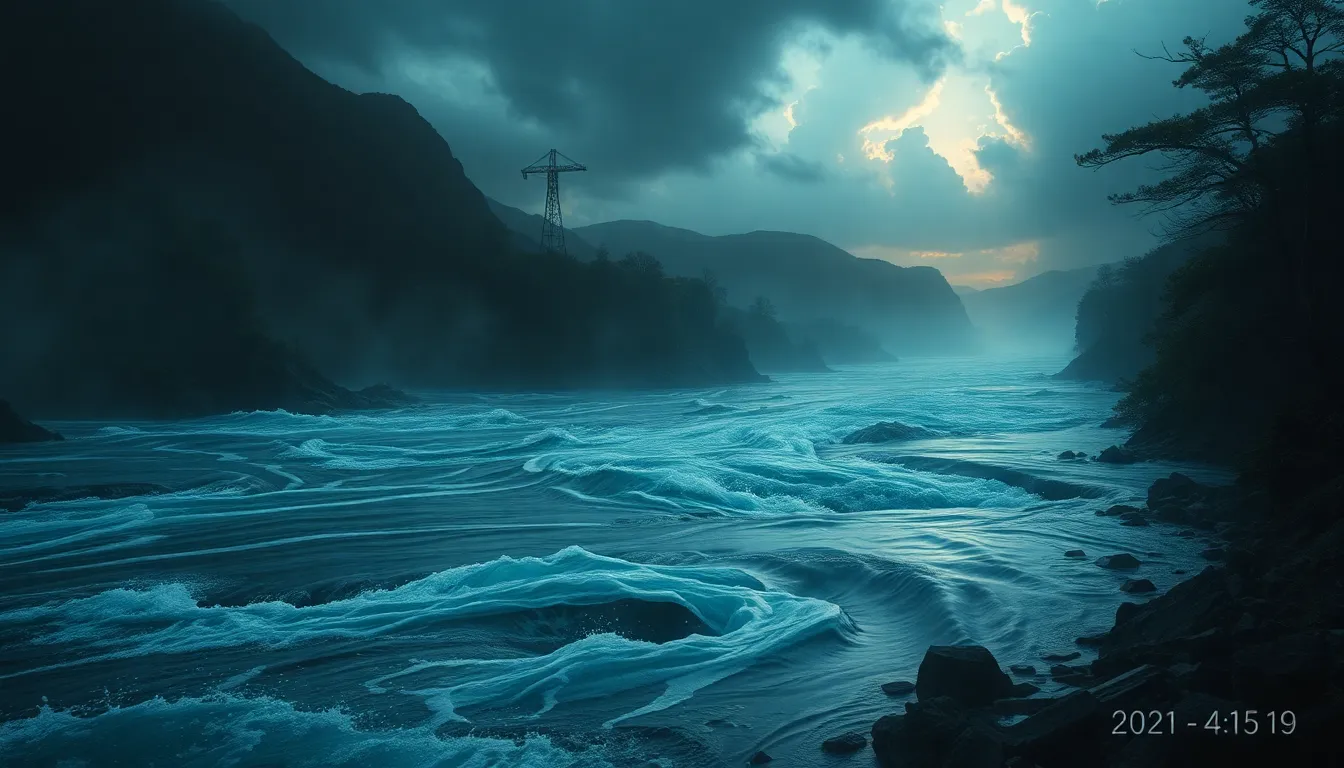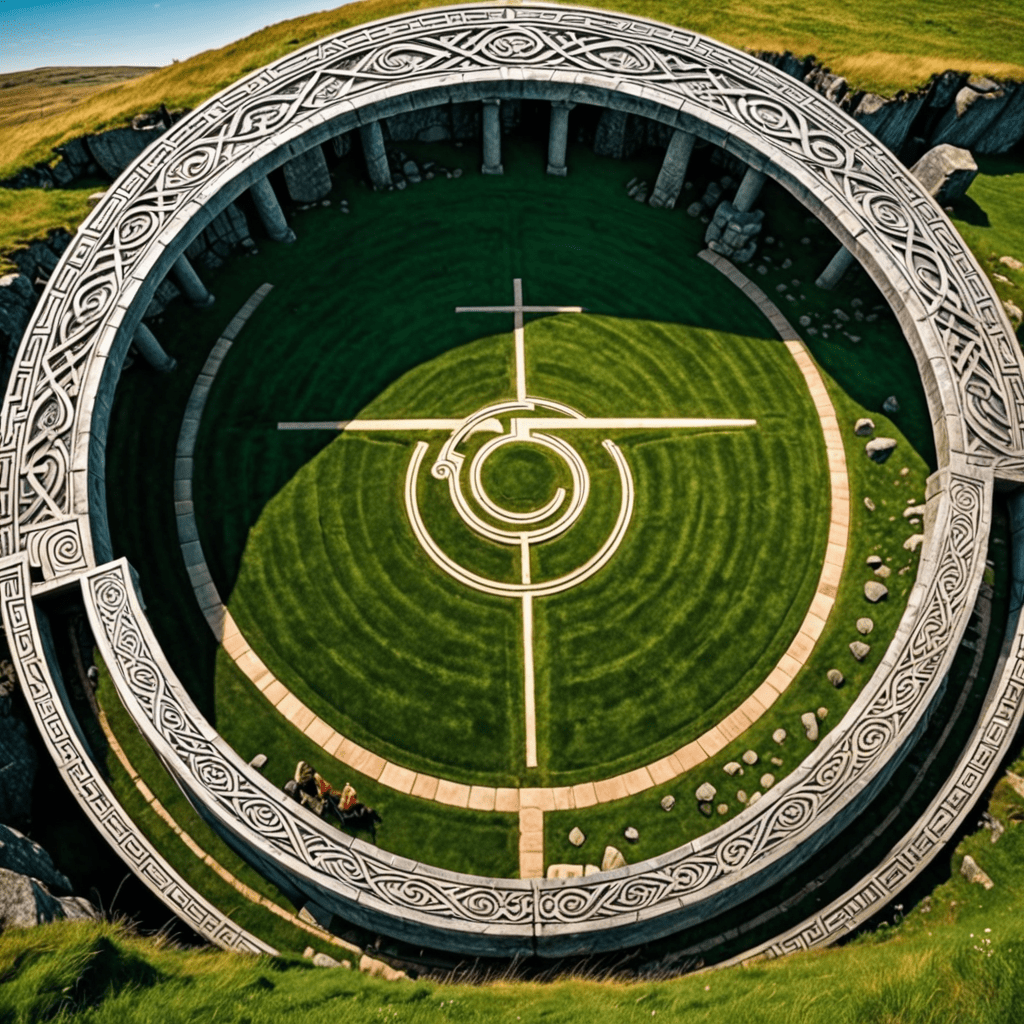The Influence of Māori Mythology on Contemporary New Zealand
Introduction: Māori Mythology and its Significance
Māori mythology is a rich tapestry of stories, legends, and beliefs that have shaped the cultural identity of New Zealand for centuries. This ancient oral tradition, passed down through generations, offers a profound understanding of the natural world, human relationships, and the very origins of life itself. It is a living legacy that continues to influence contemporary New Zealand in numerous ways, from art and literature to national identity and environmental consciousness.
The Creation Myth: The World of Aotearoa (New Zealand)
At the heart of Māori mythology lies the creation myth, a story of cosmic beginnings that explains the formation of the world. This narrative describes the primordial state of existence as a dark void, where the sky father, Rangi, and the earth mother, Papa, were eternally embraced, their bodies intertwined. From this union, all life emerged, including the first humans, who were born from the union of the sky and earth.
The creation myth, known as "Te Kore" in Māori, is a powerful symbol of creation, birth, and the interconnectedness of all things. It emphasizes the sacredness of nature and the importance of honoring the ancestors and the land. The story of Rangi and Papa also highlights the power of human relationships and the consequences of separation and division.
Gods and Goddesses: Rangi, Papa, and the Key Figures of Māori Mythology
Beyond the creation myth, Māori mythology is populated by a pantheon of gods and goddesses who embody various aspects of nature, human experience, and the spiritual realm. Rangi and Papa, the sky father and earth mother, are central figures in Māori cosmology, symbolizing the power of creation and the enduring bond between the heavens and the earth.
Other key figures include:
- Tane: The god of forests and birds, responsible for separating Rangi and Papa, creating the world as we know it.
- Tangaroa: The god of the sea, representing the vastness and power of the ocean.
- Haumia: The god of food, representing the bounty of the land and the importance of agriculture.
- Maui: A trickster god and cultural hero, known for his daring feats and his role in shaping the islands of New Zealand.
The stories of these gods and goddesses provide insights into Māori values, beliefs, and aspirations. They serve as reminders of the power of nature, the importance of respect for the environment, and the need to live in harmony with the world around us.
Mythological Creatures: Taniwha, Moa, and Other Beings of Legend
The world of Māori mythology is also home to a vibrant cast of mythical creatures, each with its own unique characteristics and significance.
- Taniwha: Powerful water spirits, often depicted as monstrous creatures, are guardians of the rivers, lakes, and oceans. They represent the untamed forces of nature and the need to respect the natural world.
- Moa: Giant flightless birds that once roamed New Zealand, now extinct. Moa are symbols of the country's rich biodiversity and the loss of a significant part of its natural heritage.
- Kiwis: Small flightless birds, symbolic of the land itself and the resilience of New Zealand's indigenous people.
- Tuatara: Ancient reptiles native to New Zealand, seen as guardians of the land and symbols of ancient wisdom.
These creatures, both real and mythical, continue to inspire contemporary art, literature, and environmental activism in New Zealand. They remind us of the importance of protecting the land and its unique biodiversity.
Cultural Practices: Māori Mythology in Traditional Art, Dance, and Storytelling
Māori mythology is deeply embedded in traditional cultural practices, including art, dance, and storytelling.
- Carving: The intricate designs of Māori carvings often depict scenes from mythology, showcasing the power of the gods, the bravery of heroes, and the beauty of the natural world.
- Dance: Traditional Māori dances, such as the haka, tell stories through rhythmic movements and expressive gestures, drawing on themes from mythology and history.
- Storytelling: Oral traditions are a vital part of Māori culture. Stories are passed down from generation to generation, preserving the myths, legends, and history of the people.
These cultural practices serve as a vibrant expression of Māori mythology and its enduring influence on contemporary New Zealand. They provide a powerful link to the past and a framework for understanding the present and shaping the future.
Contemporary Art and Literature: Māori Mythology as Inspiration
Māori mythology continues to inspire contemporary artists and writers in New Zealand. These creative minds draw on the rich tapestry of stories, characters, and themes to explore contemporary issues, celebrate cultural heritage, and challenge traditional narratives.
In contemporary art, Māori mythology finds expression in a variety of mediums, including painting, sculpture, film, and performance art. Artists often use mythology to explore themes of identity, spirituality, and the relationship between humans and the natural world. For example, contemporary Māori artists often incorporate traditional carving techniques and motifs into their works, blending the ancient with the modern. Their art often speaks to the enduring power of Māori culture and its relevance in the modern world.
In literature, Māori mythology has inspired a rich body of poetry, short stories, novels, and plays. Writers draw on ancient tales to create new narratives, explore complex characters, and challenge traditional understandings of history and identity. For example, Witi Ihimaera, a renowned Māori writer, has used Māori mythology as a springboard for exploring themes of colonialism, identity, and belonging in his novels. His works, such as "The Whale Rider," demonstrate the enduring power of Māori mythology to connect generations and offer insights into the human condition.
National Identity: The Role of Mythology in Shaping New Zealand’s Identity
Māori mythology plays a crucial role in shaping New Zealand's national identity. The stories and legends have helped to define the country's unique cultural landscape, influence its values, and foster a sense of shared heritage.
For Māori, these narratives are a vital part of their cultural identity. They provide a sense of belonging, continuity, and understanding of their place in the world. The myths and legends connect Māori people to their ancestors, their land, and their traditions.
Beyond the Māori community, the influence of Māori mythology extends to the broader New Zealand society. Stories and legends have become embedded in the national consciousness, shaping the country's artistic expression, environmental values, and sense of place. The creation myth, in particular, is often used to symbolize the story of New Zealand, highlighting the country's unique natural beauty and its importance as a place of origin and renewal.
Environmental Concerns: Māori Mythology and the Protection of Natural Resources
Māori mythology has always maintained a deep reverence for the natural world. The stories and legends emphasize the interconnectedness of all things, the sacredness of nature, and the importance of living in harmony with the environment. These values continue to be relevant in today's world, as New Zealand faces challenges related to climate change, biodiversity loss, and resource management.
Māori environmental activism draws inspiration from traditional beliefs and practices. For example, the concept of "kaitiakitanga," which refers to the responsibility of guardianship over the land and its resources, is deeply rooted in Māori mythology. This principle emphasizes the importance of protecting the environment for future generations and ensuring its long-term sustainability.
Reconciliation and Decolonization: The Reclaiming of Māori Mythology
The colonization of New Zealand had a profound impact on Māori culture, including the suppression of traditional beliefs and practices. However, in recent decades, there has been a growing movement to reclaim and revitalize Māori mythology, as a way of fostering cultural pride, strengthening identity, and promoting reconciliation.
This movement involves the preservation and transmission of oral traditions, the revival of traditional art forms, and the incorporation of Māori mythology into educational curricula. It also involves challenging Eurocentric narratives and promoting a more inclusive understanding of New Zealand's history and culture.
Future Directions: The Continued Influence of Māori Mythology on New Zealand.
Māori mythology continues to exert a powerful influence on contemporary New Zealand. Its stories, legends, and values are woven into the fabric of the country's culture, inspiring art, literature, environmental activism, and national identity.
As New Zealand continues to grapple with issues related to identity, belonging, and the environment, Māori mythology offers a vital lens for understanding the past, shaping the present, and envisioning a more sustainable and inclusive future. The continued embrace of its rich traditions will ensure that the legacy of Māori mythology lives on, enriching the cultural landscape of New Zealand for generations to come.
FAQ
Q: What is Māori mythology?
A: Māori mythology is a rich tapestry of stories, legends, and beliefs that have shaped the cultural identity of New Zealand for centuries. It offers a profound understanding of the natural world, human relationships, and the very origins of life itself.
Q: What are some key figures in Māori mythology?
A: Key figures in Māori mythology include Rangi (sky father), Papa (earth mother), Tane (god of forests and birds), Tangaroa (god of the sea), Haumia (god of food), and Maui (trickster god and cultural hero).
Q: What is the importance of Māori mythology in contemporary New Zealand?
A: Māori mythology continues to influence contemporary New Zealand in numerous ways, from art and literature to national identity and environmental consciousness. It inspires artists, writers, and activists, reminding us of the importance of respecting the environment, celebrating cultural heritage, and fostering a more inclusive society.
Q: How does Māori mythology relate to environmental concerns?
A: Māori mythology emphasizes the interconnectedness of all things, the sacredness of nature, and the importance of living in harmony with the environment. These values are reflected in contemporary environmental activism, which draws inspiration from traditional beliefs and practices, such as "kaitiakitanga."
Q: What are the future directions for Māori mythology in New Zealand?
A: Māori mythology will continue to exert a powerful influence on contemporary New Zealand, inspiring art, literature, environmental activism, and national identity. As New Zealand grapples with issues related to identity, belonging, and the environment, Māori mythology offers a vital lens for understanding the past, shaping the present, and envisioning a more sustainable and inclusive future.



